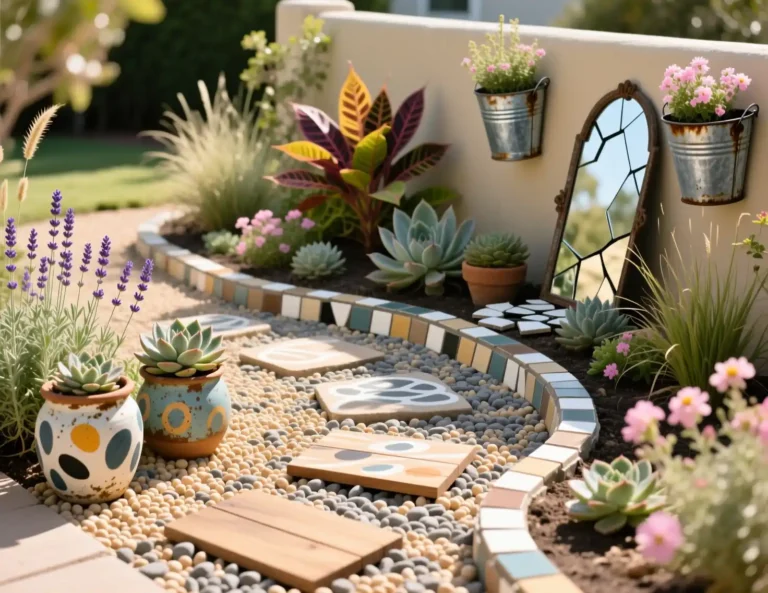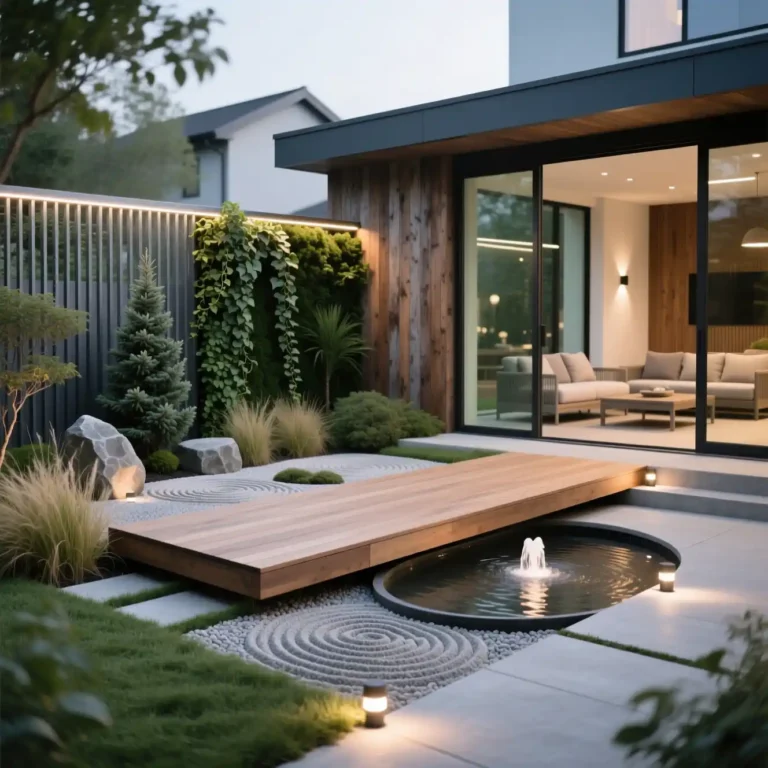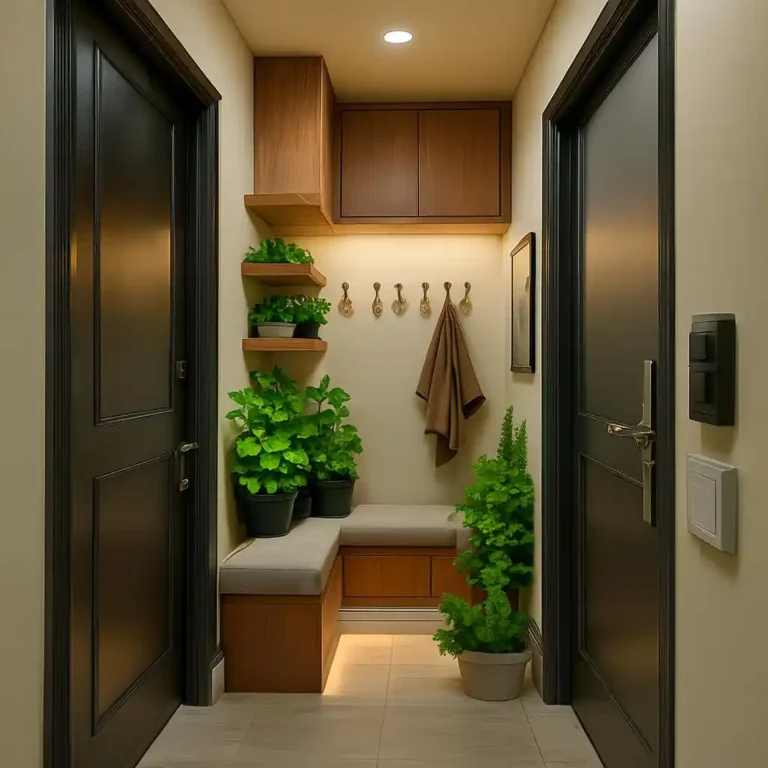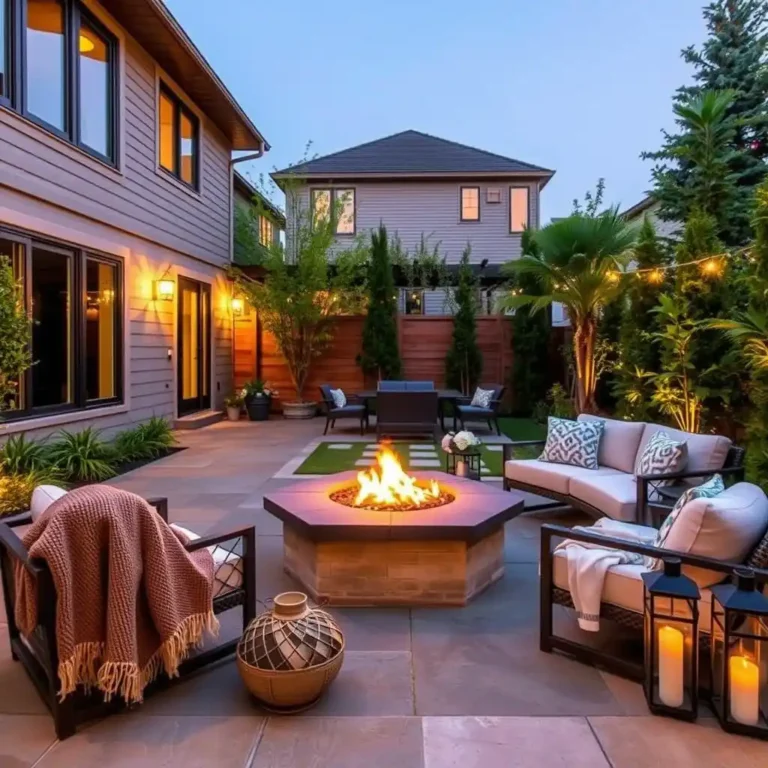13 French Cottage Garden Ideas That Bring Parisian Charm to Your Yard

French cottage gardens aren’t about perfection—they’re about poetry. Think of them as the garden version of a well-worn linen dress: slightly undone, full of color, and smelling of lavender and old stone. They don’t demand space; they demand feeling. A narrow side yard, a sun-drenched balcony, even a tiny courtyard can become a slice of Provence with the right plants, textures, and a touch of quiet romance.
Forget rigid rows and manicured hedges. French cottage style thrives on gentle chaos—vines curling around a rusted gate, herbs spilling over a stone edge, a weathered bench tucked beneath a climbing rose. It’s the kind of garden that feels like it’s been growing for generations, not planted last spring. Below are 13 ideas to bring that effortless French charm to your own small corner of the world.
Why French Cottage Gardens Work in Small Spaces
- Layered Planting Creates Depth Without Size: Tall spikes behind low mounds, climbers over low shrubs—every level adds richness.
- Soft Hardscapes Feel Timeless: Stone, brick, and weathered wood blend in like they’ve always been there.
- Fragrance Is as Important as Color: Lavender, rosemary, and jasmine don’t just look beautiful—they make you pause and breathe.
- Whimsy Over Worry: A chipped urn, a crooked trellis, or a forgotten watering can aren’t flaws—they’re proof of love.
13 French Cottage Garden Ideas
Lets start!
Climbing Roses Along a Stone Wall
Train old-fashioned roses like ‘Madame Alfred Carrière’ or ‘Zephirine Drouhin’ up a sun-baked stone or stucco wall. Their soft pink or white blooms tumble like lace, framing windows and doors with quiet elegance. The scent alone turns a simple wall into a memory.
Use soft twine to guide canes gently—never force them. Prune after flowering to keep shape, and mulch the base with crushed oyster shell to reflect light and keep roots cool. Even a 5-foot stretch of wall becomes a French postcard.
Wrought Iron Gate with Ivy and Jasmine
Install a simple, slightly rusted wrought iron gate at your garden entrance—even if it’s just decorative. Let ivy and winter jasmine climb its bars, softening the metal with green and, in late winter, tiny yellow blooms that smell like honey.
The gate doesn’t need to open—it just needs to suggest passage. Pair it with a narrow path of uneven flagstones. This single feature turns your entry into a threshold, not just a doorway.
Herb Garden in Terracotta Pots
Line a sunlit wall or windowsill with mismatched terracotta pots filled with rosemary, thyme, sage, and lavender. Let them spill slightly over the edges, and let the herbs mingle as if they’ve been there for years. The scent on a warm afternoon is pure Provence.
Use pots of varying heights—some stacked, some set low. Water deeply but infrequently; herbs hate soggy roots. Snip leaves daily for cooking—it keeps them bushy and fragrant.
Stone Path with Moss Between Cracks
Lay a winding path of irregular flagstones or reclaimed brick, leaving wide gaps between them. Let moss grow naturally in the cracks—or gently transplant patches from shady areas. The result is a quiet, green carpet that feels ancient, even if it’s new.
Avoid sealing the stones. Let rain and time do the work. Walk barefoot on it in the morning dew. It’s not just a path—it’s an invitation to slow down.
Wisteria Over a Wooden Bench
Place a simple wooden bench under a pergola or against a fence, and train wisteria to drape over it like a living canopy. In spring, the heavy purple clusters hang like chandeliers, casting dappled shade and filling the air with sweet perfume.
Choose American wisteria (Wisteria frutescens) for slower, more manageable growth. Prune hard in summer to keep it from swallowing the bench. Even in a 6×6-foot space, this becomes your favorite place to sit with tea.
Clematis Twining Around a Rustic Trellis
Fix a simple wooden trellis to a shed wall or fence and let clematis climb it—‘Jackmanii’ for deep purple, ‘Nelly Moser’ for striped blooms. The flowers appear like bursts of color against plain wood, and their delicate vines feel like brushstrokes.
Plant the clematis at the base with its crown buried a few inches deep to prevent wilt. Let the vines find their own path. Don’t tie them too tightly—let them look like they’re dancing.
Lavender Hedge Along a Border
Plant a low, fragrant hedge of dwarf lavender—‘Hidcote’ or ‘Munstead’—along the edge of a flower bed or pathway. The silvery-green foliage and purple spikes bloom in early summer, and the scent lingers long after the flowers fade.
Space plants 12 inches apart and never overwater. Prune lightly after blooming to keep them tight and bushy. This isn’t just a plant—it’s a sensory border that makes every walk feel like a stroll through the French countryside.
Weathered Wooden Bench Under a Pear Tree
Find a weathered wooden bench—preferably one with a slight wobble—and place it beneath a small pear or apple tree. Let the leaves dapple the seat in summer, and wait for the fruit to drop in autumn. Add a faded cushion and a small side table with a teapot.
This isn’t for sitting and scrolling. It’s for sitting and doing nothing. The tree’s bark, the bench’s grain, the quiet rustle of leaves—this is the soul of a French garden.
Climbing Honeysuckle by the Back Door
Grow a fragrant honeysuckle—like ‘Serotina’ or ‘Lonicera periclymenum’—along a trellis beside your back door. The tubular flowers bloom in white and pale yellow, releasing their sweetest scent at dusk.
Let it twine loosely, and don’t prune it into shape. A few tangled stems only add to its charm. Open your door in the evening, and the fragrance will greet you like an old friend.
Vintage French Urn with Geraniums
Place a large, slightly chipped terracotta urn—found at a flea market or painted in soft blue—on your patio or step. Fill it with bright red or coral geraniums, their glossy leaves and bold blooms echoing the colors of rural French villages.
Use well-draining soil and water regularly. In winter, move it under eaves or bring it inside if frost threatens. This one pot becomes a focal point—quiet, elegant, and full of life.
Cobbled Courtyard Corner
Even if you have no courtyard, create one. Lay a small square of broken bricks or cobblestones (real or faux) in a sunlit corner. Surround it with a low boxwood hedge, a few rosemary bushes, and a single climbing rose. Add a small fountain or a single birdbath.
The rough texture underfoot, the clipped green, the splash of color—it’s the essence of a Provençal courtyard, scaled for your smallest space.
Bamboo Screen with Morning Glories
Tuck a tall bamboo screen along a fence or side yard to create privacy without blocking light. Let morning glories climb it, their sky-blue or violet flowers opening each morning like tiny suns.
The screen gives structure, the vines give movement. In late summer, the blooms will cascade down like waterfalls of color. It’s a living curtain that changes daily.
Copper Watering Can as Sculpture
Don’t just use a watering can—display it. Hang an old copper one from a hook beside your shed, or place it on a stone pedestal filled with trailing ivy. The patina catches the light, and the shape echoes the quiet elegance of French rural life.
Fill it with dried lavender sprigs in winter. It’s not a tool here—it’s a relic, a quiet tribute to the rhythm of garden life.
Frequently Asked Questions About French Cottage Gardens
Do I need a big yard for a French cottage garden?
No. French cottage style thrives in small spaces. It’s about layers, scent, and texture—not acreage. Even a 4×8-foot balcony can become a Provencal escape with the right plants and a single bench.
What’s the most important plant in a French cottage garden?
Lavender. Its scent, color, and resilience define the style. But don’t stop there—rosemary, jasmine, and old roses complete the trio that makes the air feel like France.
Can I do this in containers?
Absolutely. Use large pots for lavender, rosemary, and geraniums. Let climbers like clematis and honeysuckle grow up trellises attached to railings.
Group containers in threes, and let them spill over the edges. Container gardens can be more French than a lawn.
How do I keep it from looking too messy?
French cottage gardens look lived-in, not neglected. Keep a few clean lines—a path, a hedge, a bench—and let the rest breathe.
Prune regularly, but don’t shape everything into balls. Let the roses lean. Let the herbs spill. That’s the point.
Do I need to water every day?
Not at all. Most French cottage plants—lavender, rosemary, thyme, geraniums—prefer to dry out between waterings.
Overwatering kills more plants than neglect. Let the soil tell you when it’s thirsty.
Final Thought
A French cottage garden doesn’t ask you to have green thumbs—it asks you to have quiet hearts. It’s not about perfection. It’s about the way the light hits a copper can at dusk.
The scent of lavender when you open the door. The moss that grows where no one planted it. It’s the garden that remembers you, long after you’ve gone inside.
Start with one pot. One bench. One rose. Let the rest come slowly.






